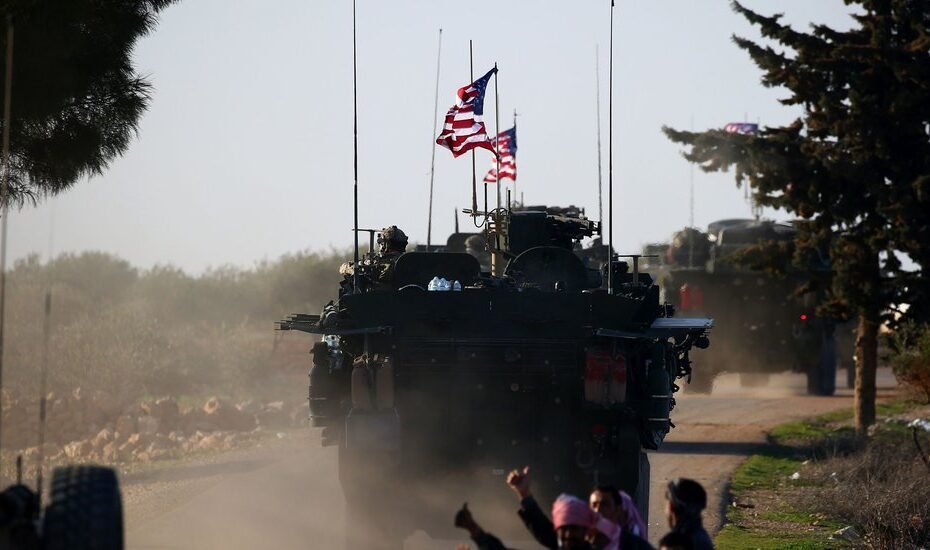a series of tragic events, three U.S. troops lost their lives, and 34 others were injured in a drone attack on an American base situated on the Syria-Jordan border. Concurrently, a British warship intercepted and downed a drone launched by Houthi fighters from Yemen, backed by Iran. These incidents have intensified geopolitical tensions in the region, prompting swift responses from world leaders.
Attack on U.S. Troops
The deadly drone attack targeted an American base known as Tower 22, located on the Syrian-Jordanian border. Despite numerous previous drone and missile attacks in the region, this marks the first instance where American personnel have been killed. President Biden swiftly attributed the strike to militant groups supported by Iran, vowing to hold those responsible accountable.
President Biden’s Response
President Biden condemned the attack, explicitly pointing fingers at Iran-backed radical militant groups operating in Syria and Iraq. He emphasized that the United States would respond forcefully to this act of aggression, signaling a potential escalation in the already tense relationship between the U.S. and Iran. The President’s strong stance reflects a commitment to protecting American interests in the face of rising threats.
British Warship’s Intercept
In a separate incident, the HMS Diamond, a British warship, successfully intercepted and shot down a drone launched by Houthi fighters from Yemen. The Houthis, also backed by Iran, have been active in launching attacks in the region. The interception by the British warship highlights the complex web of conflicts involving various actors in the Middle East.
Global Ramifications
The drone attacks on both the U.S. troops and the British warship underscore the multifaceted challenges in the region. As the United States contemplates its response, there is a growing concern about potential escalations and the need for strategic decisions that balance deterrence with the avoidance of widespread conflict.
Iran’s Role and Regional Alliances
The finger-pointing at Iran raises questions about the extent of its influence and support for militant groups across the Middle East. Iran, often associated with an “axis of resistance,” has proxies in Lebanon, the Palestinian territories, Iraq, Syria, and Yemen. The interconnected nature of these alliances complicates the geopolitical landscape, contributing to a volatile and dangerous environment.
Houthi Attacks and Regional Dynamics
The involvement of Houthi fighters from Yemen adds another layer to the regional dynamics. Recent Houthi attacks, including hitting a tanker in the Gulf of Aden, demonstrate the group’s ability to disrupt maritime activities. The ongoing conflicts involving the Houthis, coupled with their connections to Iran, contribute to the complexities that world leaders must navigate.
Pressure on President Biden
President Biden faces immense pressure to respond decisively to the attacks on U.S. troops. The loss of American lives escalates the urgency for a robust and effective reaction. As discussions unfold within the U.S. administration, there is a delicate balance to strike between demonstrating strength and avoiding a broader, uncontrollable conflict.
Challenges of Responding Effectively
The challenges in responding effectively to these attacks are significant. The interconnected nature of conflicts in the Middle East requires nuanced strategies that address immediate security concerns while considering the broader regional dynamics. President Biden’s administration must navigate these complexities to formulate a response that safeguards American interests and promotes stability in the region.
Ceasefire Talks and Potential for De-escalation
Simultaneously, talks are underway in Paris, involving intelligence figures from Israel, the United States, Egypt, and the Qatari prime minister. These discussions aim to explore the possibility of a ceasefire in Gaza, adding a dimension of diplomatic efforts to mitigate tensions. However, significant gaps in negotiation terms pose challenges to achieving a comprehensive agreement.
Implications for the Gaza-Israel Conflict
While the Gaza-Israel conflict is not the sole focus of the recent attacks, it contributes to the overall volatility in the Middle East. The delicate balance of power, coupled with the ongoing struggles for ceasefires and negotiations, underscores the need for a comprehensive approach to address the root causes of conflicts in the region.
Conclusion: Navigating a Dangerous Landscape
The recent drone attacks on U.S. troops and the intercept by the British warship highlight the precarious and dangerous landscape in the Middle East. President Biden faces critical decisions that will shape the trajectory of U.S. involvement in the region. As global leaders assess the situation, the imperative is to find a delicate balance between deterrence and diplomatic efforts to prevent further escalation and foster stability.
